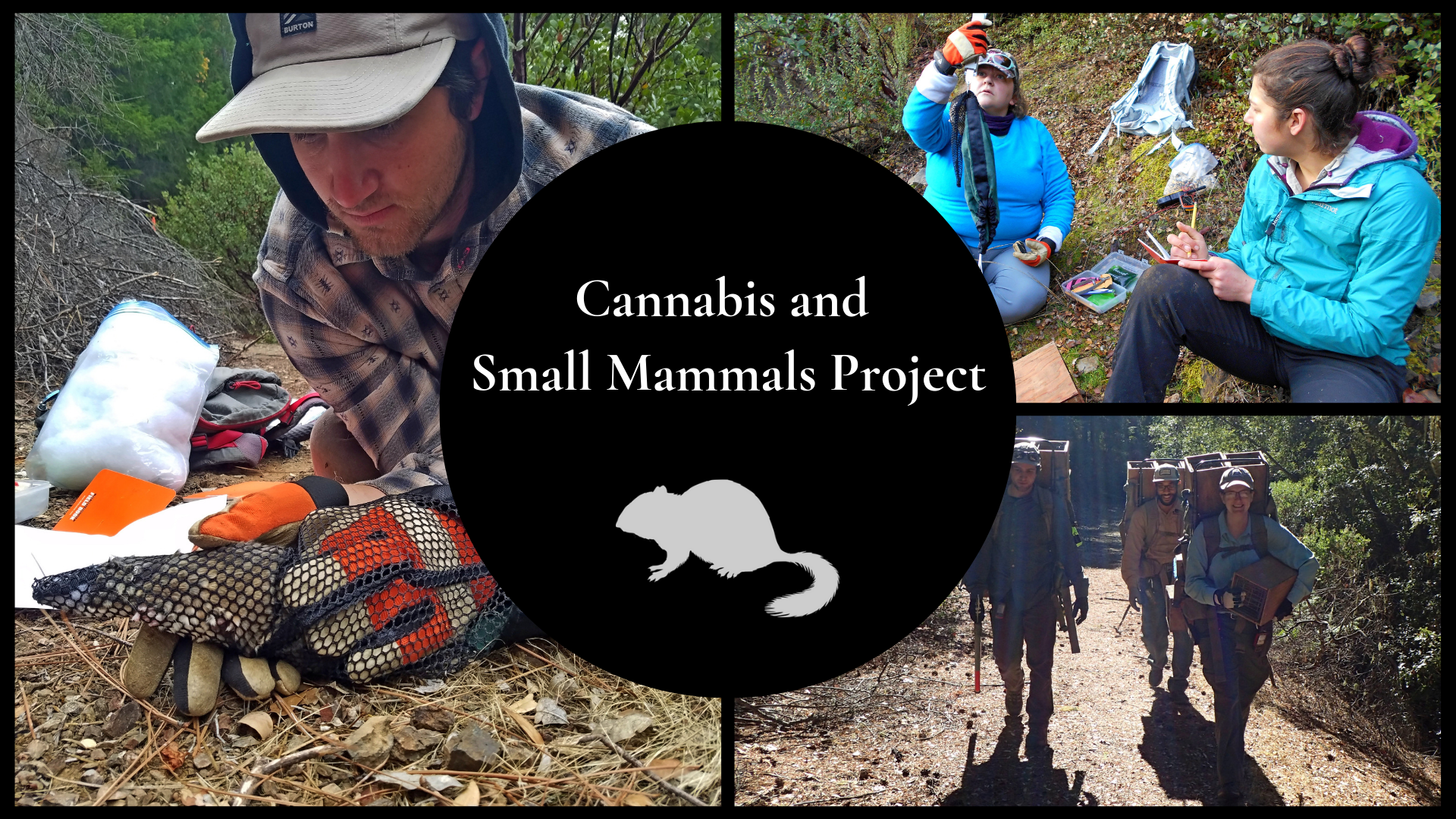
Small mammals have a significant role in ecosystems where they influence disease dynamics, habitat composition, and predator populations. Examples of wildlife species of conservation concern that largely or entirely depend on small mammals for prey include the Pacific fisher (Pekania pennanti), Humboldt marten (Martes americana humboldtensis), and the Northern spotted owl (Strix occidentalis caurina). However, the interactions with and potentially deleterious impacts of cannabis cultivation in remote forest settings on small mammal populations are currently unknown. Due to the lack of data on this subject, and the pivotal role that small mammals have in western forests, IERC initiated a project to examine this question.
Objective: IERC designed a small mammal study to determine the spatial and temporal influence of cannabis cultivation on the diversity, density, and population health of small mammals throughout California’s forests. We are concurrently looking at these parameters before and after active restoration projects at these sites and incorporating data into a prey abundance and predator risk model where illicit cultivation of cannabis occurs in California.
Time Frame: IERC initiated the project in 2014 and it will continue through spring of 2020.
Project Support: United States Fish and Wildlife Service, California Department of Fish and Wildlife, the Hoopa Tribe’s Forestry Department, and the United States Forest Service Law Enforcement and Investigations
